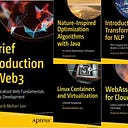Member-only story
Unlocking the Power of Contextual Document Embeddings: Enhancing Search Relevance
Today I will try to explain the paper on contextual document embeddings. https://arxiv.org/pdf/2410.02525
In information retrieval, the goal is no longer just to match search terms with documents — it’s about understanding context. When you enter a search query, you want results that grasp the full meaning of what you’re asking, not just a basic keyword match. This is where document embeddings and, more recently, contextual embeddings come into play. In this blog, we’ll dive into what these embeddings are, how contextual embeddings enhance search systems, and we’ll go step by step through code that implements Contextual Document Embeddings (CDE) from a recent research model.
What Are Embeddings?
At its core, an embedding is a vector (a list of numbers) that represents some form of data (e.g., words, sentences, documents) in a way that captures its meaning in relation to other data. In simpler terms, embeddings allow us to convert text into a format that machines can understand while maintaining the relationships between different pieces of text.
For example:
- The words “cat” and “dog” will have embeddings that are close to each other in a high-dimensional space because they are related (both are animals).
- The word “economy” will have an embedding far from “cat” and “dog” because it’s unrelated.
Document embeddings work similarly, except they represent entire documents (instead of just words) in this multi-dimensional space.
What Are Contextual Embeddings?
While standard embeddings can represent documents or queries independently, they ignore a key aspect: context. This means that when a model generates an embedding for a document or a query, it doesn’t consider how this document fits into the broader collection of documents in the dataset. This limitation can cause a retrieval system to miss nuances, especially in large, diverse datasets.
Contextual embeddings, on the other hand, take into account the broader context of the document corpus. They embed documents and queries not just based on their content but also by considering the context provided by other documents in the dataset. This improves retrieval performance because now the model understands how each document relates to the entire corpus.

